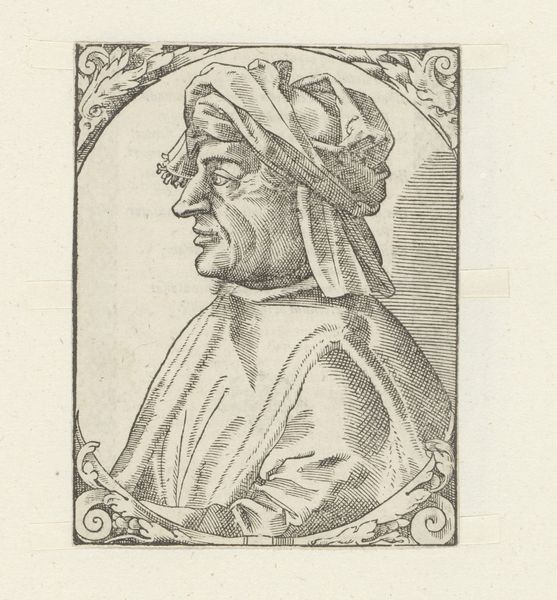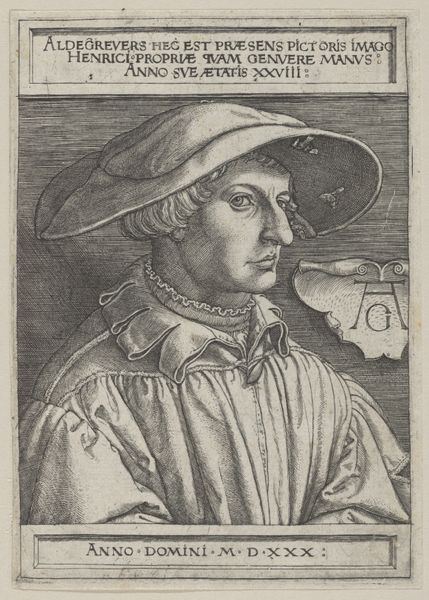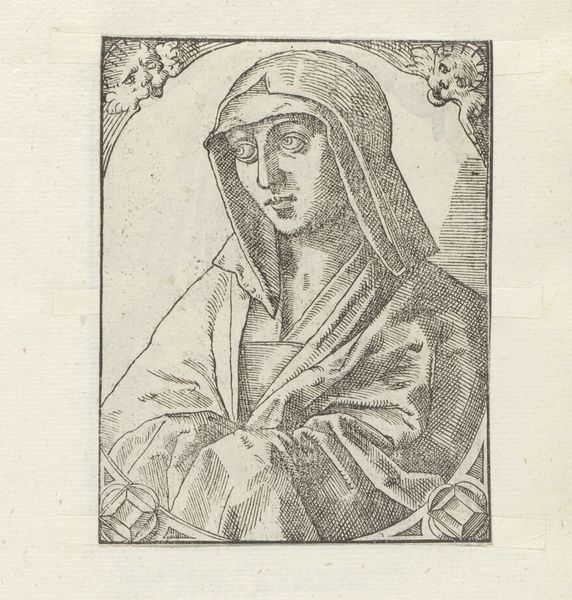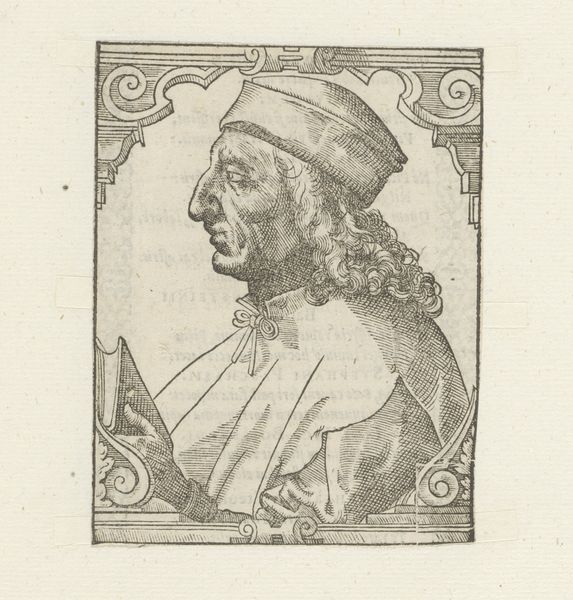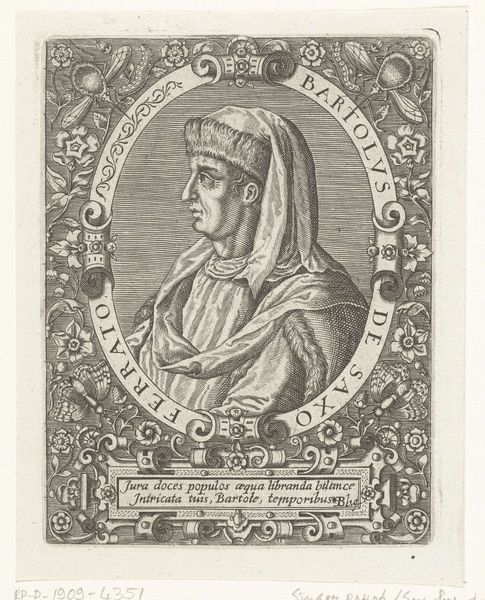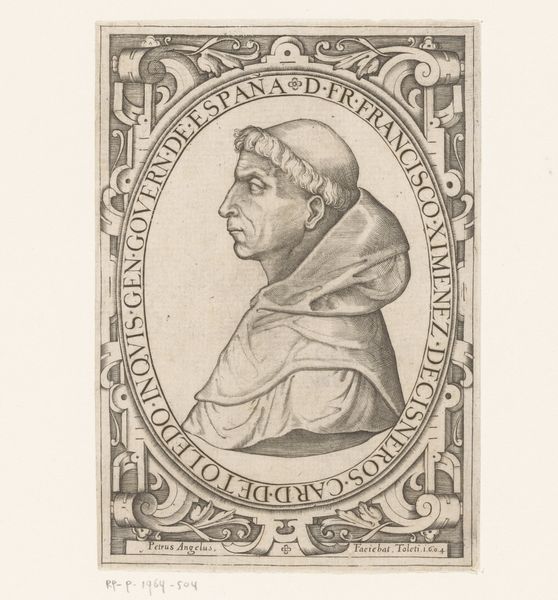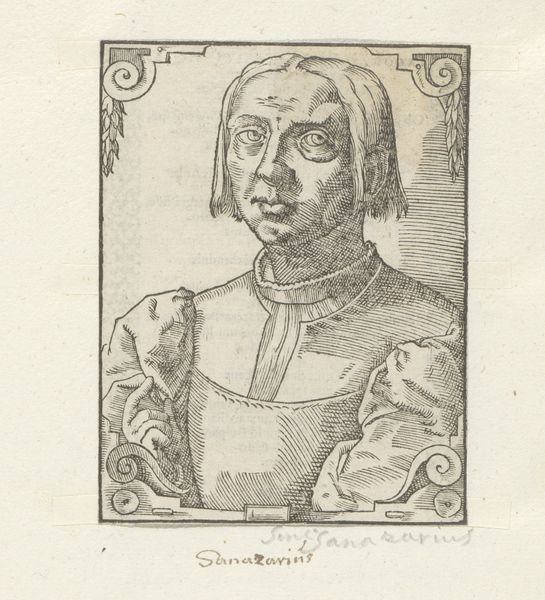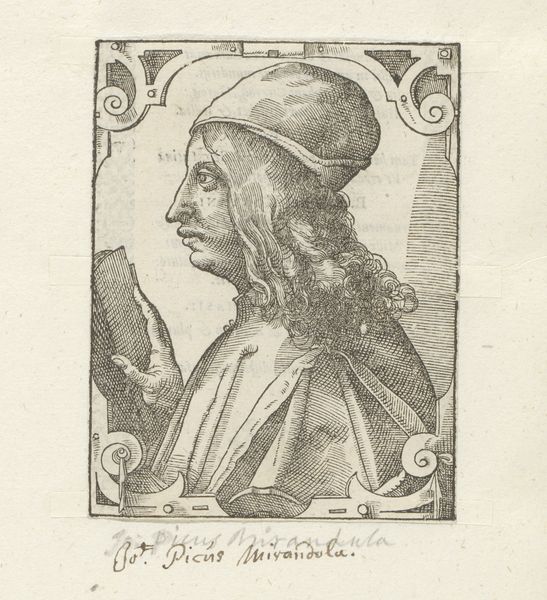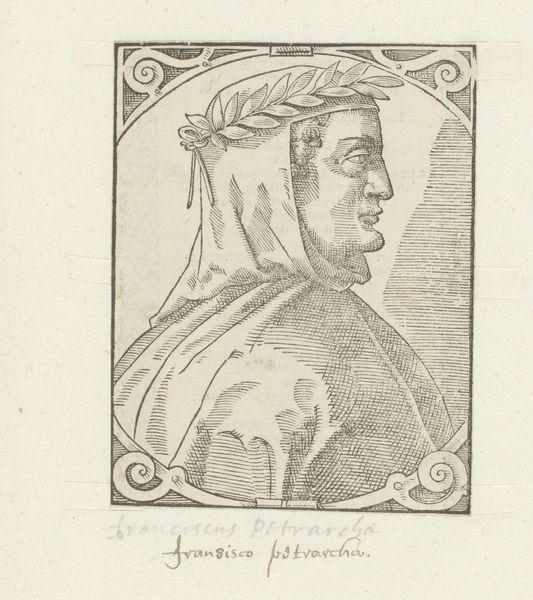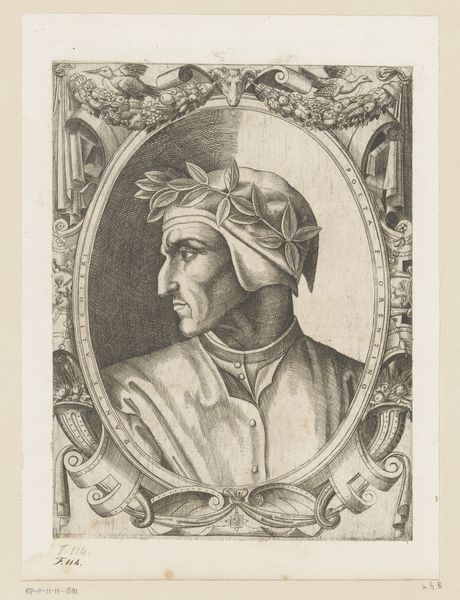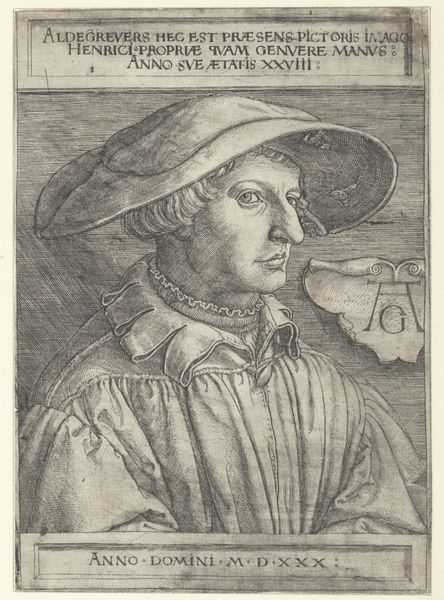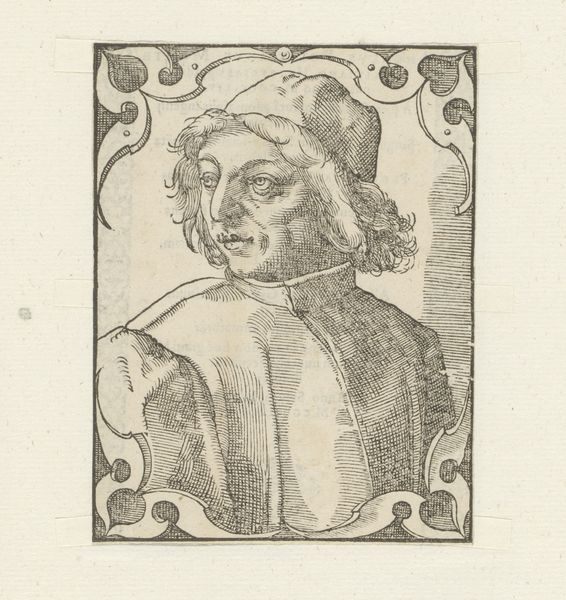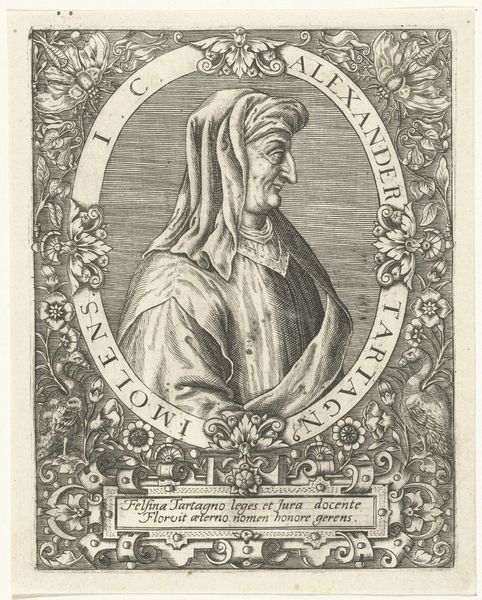
print, engraving
#
portrait
# print
#
old engraving style
#
mannerism
#
history-painting
#
engraving
Dimensions: height 110 mm, width 84 mm
Copyright: Rijks Museum: Open Domain
Curator: This engraving, believed to be from between 1549 and 1577, depicts Niccolò di Piero Capponi. The artist remains anonymous, but the work speaks volumes. What's your initial take? Editor: A sense of stern authority. The fine lines create a very sober mood. He has an intent gaze and appears... resigned, almost. The image really captures a palpable weight. Curator: Interesting observation. Consider the historical context. Niccolò Capponi was a key figure in Florentine politics, advocating for republicanism against the rising power of the Medici. His execution shaped the political imagery for years. Does that lend new layers to your reading of his apparent resignation? Editor: It does. It makes you wonder what symbols here represent his political stance, the style—the so-called Mannerism. Were these elements chosen consciously to reflect that, or was the artist simply working in the style of the era? Curator: Mannerism favored complex composition and heightened emotions. The delicate, precise engraving work almost romanticizes his features, despite the air of sorrow. The symbols within the decorative border would've likely held meaning for the contemporaries too. I would have liked more symbols here, however. Editor: Agreed. It makes me think about who this image was created for, too. Was this a commemorative piece meant for wide distribution? The printmaking makes me think yes, as opposed to a singular display of wealth like a large-scale painting. Curator: Precisely. The accessibility of prints allowed for wider circulation of political imagery and commentary. Capponi's portrait becomes a vessel, almost, for memory, shaping the collective consciousness of Florence through its visual narrative. It allows us to rethink, to expand how society and art act reciprocally on each other. Editor: Absolutely. And thinking about public perception and its interaction with power—I'd wager that the intended audience would react very differently to this work as the decades marched on, depending on who was in charge. Curator: A great point to consider. These portraits do far more than represent individual faces. They capture history, power, and memory. Editor: It makes one look for contemporary echoes, almost. Fascinating how the impact can be so long lasting.
Comments
No comments
Be the first to comment and join the conversation on the ultimate creative platform.
